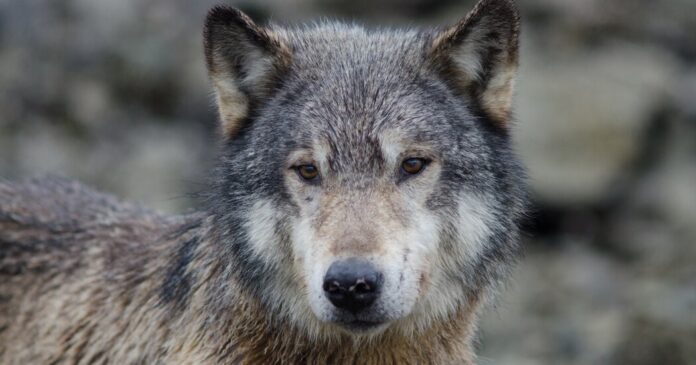New footage reveals that wolves in British Columbia are not only capable of swimming to reach underwater traps, but also exhibit deliberate problem-solving to steal bait. Researchers working with the Heiltsuk Nation documented a wild wolf repeatedly dismantling European green crab traps, a behavior previously unobserved in the species. The findings suggest that wolves possess a higher degree of cognitive flexibility and tool-use-adjacent behavior than previously understood.
The Discovery
The Heiltsuk Nation, stewards of their traditional lands and waters, had been setting traps to control the invasive green crab population. However, the traps were consistently found torn apart, even those placed in deep water, baffling researchers. To identify the culprit, a remote camera was deployed in May 2024, capturing the astonishing behavior.
The footage showed the wolf swimming to the traps, towing the buoy with its jaws, and methodically pulling the rope to raise the trap. In under three minutes, it dismantled the netting, retrieved the bait, and consumed the sea lion strips before casually departing.
Implications for Animal Cognition
While some experts debate whether this constitutes true “tool use” (given that humans initially placed the rope), the deliberate sequence of actions strongly suggests intentionality. “Even if we don’t want to call it tool use, the fact that the trap was completely underwater… makes it hard to argue that she didn’t understand the connection between all these steps,” explained Kyle Artelle, an ecologist working with the Heiltsuk.
This discovery challenges the long-held assumption that tool use is uniquely human. Evidence of tool use in other species – including octopuses, crows, and chimpanzees – has already blurred the lines, but this instance demonstrates a previously unseen level of problem-solving in wolves.
Wider Context and Future Research
Experts like Sabina Nowak, a wolf ecologist at the University of Warsaw, are not surprised by the wolves’ intelligence. Susana Carvalho, a primatologist, notes that this finding reinforces the idea that complex cognitive abilities are more widespread in the animal kingdom than previously thought.
The wolves’ behavior may be influenced by the minimal human disturbance in the region, allowing them greater freedom to explore and innovate. William Housty, director of the Heiltsuk integrated resource management department, suspects that multiple wolves are involved, based on reports from field crews.
Whether this behavior is an isolated incident or a broader cultural pattern remains unknown. The discovery highlights the need for continued research into animal cognition, challenging anthropocentric biases and fostering a deeper understanding of the intelligence found throughout the natural world.
The wolves’ actions serve as a reminder that intelligence exists beyond the human species, demanding a reevaluation of how we perceive and interact with other animals
































